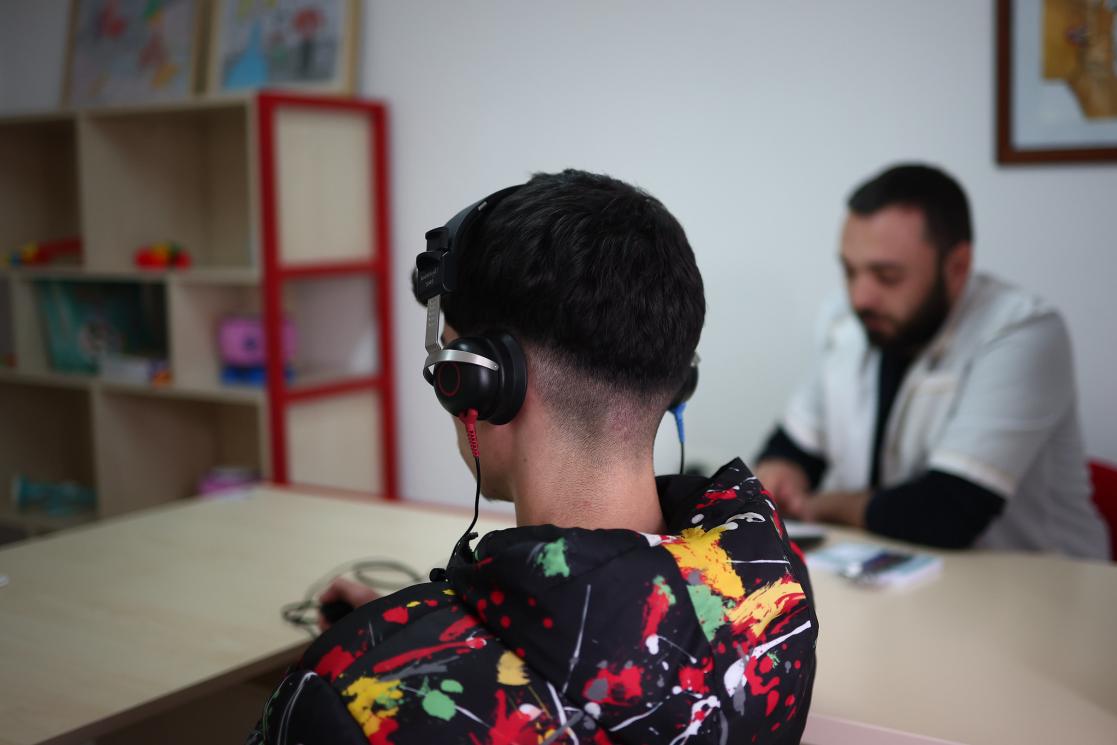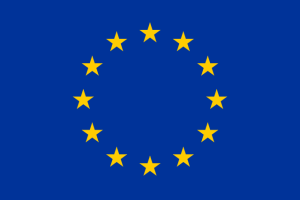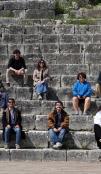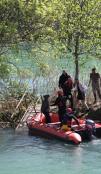Showing love and care in signs language, a teacher’s journey at the school for children with hearing impairment

A painting with seven hands in different colours holding flowers and some others showing her name in signs language is hanged in Orjola Idrizi’s office at the Institute for Children with Hearing Impairment in Tirana. It has a special meaning to her as it was her first gift as school’s principal for Teacher’s Day. It also reminds her, the concert with songs and dances children had learned even without listening to any music, just to show gratitude, love and care to their teachers.
“Feeling often marginalized in the society, they know what it means to be isolated or distant. That’s why the hands are in different colours, they have an inclusive approach toward others and they show it in the way they can”, explains Idrizi while looking the little hands painted in various positions to form her name.

EU in Albania
The school was founded in 1963 and there are 77 children and teenagers with Hearing Impairment studying here, from 6 years old up to almost 20 years old. They come from all over Albania, and some of them live in the dormitory, spending most of their time in common spaces.
They learn the signs language from first ‘words’ to broader notions.

EU in Albania
This school works with the same curriculum as all other public schools, teaching history, math, geography or literature. But they have also special subjects as pronunciation. Even why the children don’t have voice and cannot talk, they are taught how to move their mouth according to the phonemes and then words. As children get the therapy at an early age, this gives them the ability to read speaker’s lips, so they can understand those who don’t speak signs language.
Until last year, the children who completed their 9-year education program were sent home without employment opportunities. Now it is a Vocational High School where children with hearing impairment can learn professions and have the possibility to get employed in hairdressing, woodworking and also photography.

EU in Albania
At the photography lab, opened as part of EU4 inclusive teaching programme, most the images shot by young students show nature, birds, flowers, woods. “They are very attracted to nature. Children who do not listen have a very developed sense of sight and they like colours very much”, explains school’s principal Idrizi recalling an exhibition at Europe House where their talent had a wider attention.
As part of the programme, all the classrooms furniture are new and for the first time, the Institute for Children with Hearing Impairment is now equipped with an audiometer that measures students hearing acuity. “It helps for those children who have partial hearing or those with hearing aids. The hearing is measured with the audiometer telling us if the hearing aid needs to be changed, or in the case of children who come for the first time at school we can test the hearing functions”, says Orjoja, while an audiologist in the audiometer room is following an audiometry exam.
An exact number of people with hearing impairments in the country is not known, but Idrizi is aware that not all the families, mainly those in remote areas, have the possibility to bring their children to Tirana. “Our researches showed cases of children with hearing impairment attending usual schools. That is why we want to become a resource centre and organize a department of itinerant teachers. This means that the assistant teachers, trained here at the institute can travel where the children are”, she explains.
Although facing the difficulties of physical disabilities may seem daunting, Idrizi has another point of view. “At my very first day at this school I had these mixed emotions. We cannot really change our physical limitations sometimes, but we can change our approach to these limitations, which means that these children can give a lot and can be part of the society like all other children. They have hidden potentials, we just have to give them the opportunity to express theirself and help or encourage them to follow their dreams. They should not stop there. They can go beyond their physical barriers".

EU in Albania
Walking in school halls, children would express gratitude by making the ‘thank you’ sign, which in Albanian signs language is showed by putting the right hand to the heart. Beside photographs or paintings, they show love by forming a heart with their fingers or crossing their hands as if they are hugging themselves.
“The work here has been a challenge for me. I have done what I could but I know for sure that what I have learned or emotionally earned has been more. I have learned signs language during the training but they have teached me more than this”, says Orjola Idrizi.
Background information
EU4Inclusive Teaching is a project funded by the European Union aiming to improve Albanian students' learning outcomes and close the gap between students belonging to different socio-economic categories, which is crucial for both social cohesion and sustainable development of the country. Implemented by Open Society Foundation for Albania (OSFA) and Tampere University of Applied Science (TAMK), the training of 64 school principals and teachers in Tirana has been completed, and the project has continued with teachers from the other districts. 320 active and motivated teachers have been selected for the ‘Train the trainer’ (ToT) program. Teachers of this nationwide programme pass their knowledge to other 15 000 teachers on geographical coverage and need. Equipping teachers with the necessary competencies and skills to build a motivating and inclusive learning environment is considered as the key to advancing the above priority.





